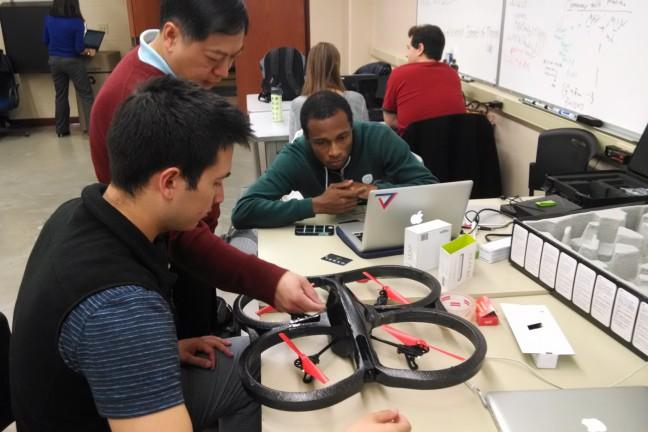Just after the tragic Jan. 8 Tucson shooting that left six dead and 14 wounded, there was mass confusion on the Internet.
Twitter itself was a boiling agglomeration of conflicting news reports, the first of which began popping up within a few minutes. Sixty-two minutes after the brutal attack, National Public Radio tweeted an update: “BREAKING: Rep. Giffords (D-AZ), 6 others killed by gunman in Tucson,” plus a link. Mass retweeting ensued and other media outlets, including Huffington Post and CNN, began attributing the same information to NPR. Some remained on the fence, reporting that conflicting accounts were surfacing, but the damage had been done.
In the following days, Twitter was criticized, even condemned, as a tool during breaking news scenarios. Unlike the relatively contained space of a website, the false tweets had spread so rapidly it had taken hours for the correct report to overtake them.
As I watched the news play out Jan. 8, I was reminded of a somewhat similarly confusing day last year. It was just after 5:30 p.m. Madison-time on May 1, 2010 when I found myself in a lung-crushingly dense crowd being urged onward by police officers. I was not at Mifflin or even in Madison – I was in Times Square, and something was up. My family had made it about halfway to the southern edge of the lively intersection on our way to a show when we were suddenly rerouted down a street to the west. Given the theater-hour rush, space evaporated immediately and sent an annoyed buzz across the area.
“Maybe someone famous is coming through,” suggested a nearby tourist. “Wasn’t Oprah supposed to be here tonight”?
But it soon became obvious all was not well. While police officers shrugged at us when we asked for information, whispers tinged with danger had begun to wind their way through the pressing bodies. We were ushered through the first floor of the Marriot Marquis hotel, where at one point the mob of people became so dense we were forced to stop altogether. I decided it was time to get out my phone.
I pulled up Twitter and searched for nearby tweets. Little pins dropped all around me, which was unsurprising for the theater district, but after reading just a few it was obvious this wasn’t show chatter. People for several blocks around were being evacuated, and something sinister was definitely going on in the area. A few tweets speculated about a strange package in the square or a suspicious person, but most focused on a vehicle parked at the corner of 45th street – just on the other side of the hotel in which I was currently stuck. I recalled the huge amount of police activity I had seen there as we entered and scanned for some information from the major news outlets, but there was none. I decided to author a tweet of my own: “Being herded out of the times square area because a car might explode #massconfusion.”
It was not my most elegant or informative tweet, but it followed the route the major news outlets were forced to take in reporting Giffords’ status – there was minimal information, but as it emerged they were expected to report it instantaneously. I lucked out that the reason for the evacuation most people were tweeting was correct and that I had caught enough glimpse of the action to minimally confirm that, but what if the masses had been wrong? What if this had been the time the major news outlets got ahead of themselves? Chances are, with the lack of officials to confirm facts, I would have had it wrong too. And that is what happened after NPR incorrectly tweeted Gifford had died.
After the Tucson shooting, Twitter was not the problem, and neither was the vast land of the Internet. It is the handful of media outlets that acted on presumptions and then published those presumptions in a place that lends itself to the wildfire-like dissemination of 140 characters. These outlets are learning and taking cues from rapid-response communication platforms like television and the more basic breaking news article hosted on a website to determine how they conduct themselves on Twitter. New ethical debates (if you mistweet, do you delete or correct in a later tweet?) are opening up and beginning to form the guidelines for future Twitter use.
Most importantly, the media is realizing that Twitter can be used in breaking news scenarios for more than the quick update or link to an article. Responses can be curated with tags or sites like Storify. It can make magical little maps like the one that let me know I was still a few blocks from freedom – a use drawn on by the Washington Post after the Tucson shooting to show links tweeted by nearby media outlets.
Like the media itself, Twitter is no longer just words and pictures, and that new power is something many are ready to label as dangerous. But innovation has always meant greater responsibility, and that is something that should be embraced head-on for its potential.
Signe Brewster is a junior majoring in life sciences communication. If you have a topic you want to see addressed in Technologic or just want to join her in geeking out about new technology, e-mail her at [email protected].
















